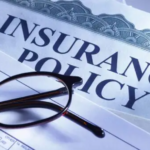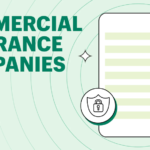Introduction
Auto insurance is a fundamental aspect of vehicle ownership, offering financial protection against a variety of risks associated with driving. Understanding the intricacies of auto insurance can be overwhelming due to the numerous coverage options, policies, and legal requirements involved. This guide aims to demystify auto insurance, providing a comprehensive overview to help you make informed decisions.
The Basics of Auto Insurance
What is Auto Insurance?
Auto insurance is a contract between a vehicle owner and an insurance company. The owner pays a premium, and in exchange, the insurer provides financial protection against losses resulting from vehicle-related incidents. These incidents can include accidents, theft, natural disasters, and liability claims.
Why is Auto Insurance Important?
- Financial Protection: Auto insurance covers repair costs, medical bills, and legal fees that can arise from accidents or damages.
- Legal Requirement: Most states require a minimum level of auto insurance to legally operate a vehicle.
- Peace of Mind: Knowing you are protected against unforeseen events can provide peace of mind.
Types of Auto Insurance Coverage
Auto insurance policies typically include several types of coverage, each addressing different risks. Understanding these coverage options is crucial in tailoring a policy that suits your needs.
Liability Coverage
Liability coverage is usually required by law and consists of two components:
- Bodily Injury Liability: Covers medical expenses, lost wages, and legal fees if you are at fault in an accident that injures another person.
- Property Damage Liability: Pays for repairs or replacement of another person’s property damaged in an accident you cause.
Collision Coverage
Collision coverage pays for repairs to your vehicle if it is damaged in an accident, regardless of who is at fault. This type of coverage is especially important for new or expensive vehicles.
Comprehensive Coverage
Comprehensive coverage protects against non-collision-related damages, such as theft, vandalism, fire, and natural disasters. It ensures you are covered for a wide range of potential risks.
Personal Injury Protection (PIP)
PIP, also known as no-fault insurance, covers medical expenses, lost wages, and other costs for you and your passengers, regardless of who is at fault in an accident. PIP is required in some states.
Uninsured/Underinsured Motorist Coverage
This coverage protects you if you are involved in an accident with a driver who has no insurance or insufficient coverage. It helps cover medical expenses and damages to your vehicle.
Gap Insurance
Gap insurance is beneficial for those with financed or leased vehicles. It covers the difference between the vehicle’s actual cash value and the amount you owe on your loan or lease if the car is totaled.
Factors Affecting Auto Insurance Rates
Several factors influence the cost of auto insurance premiums. Understanding these factors can help you manage your insurance costs effectively.
Driving Record
Your driving history is one of the most significant factors affecting your insurance rates. Drivers with a clean record typically pay lower premiums, while those with accidents, tickets, or DUIs face higher rates.
Vehicle Type
The make, model, and year of your vehicle also impact your insurance costs. High-performance cars, luxury vehicles, and cars with high theft rates usually have higher premiums.
Location
Where you live affects your insurance rates due to varying accident rates, crime rates, and weather conditions. Urban areas often have higher premiums than rural areas.
Age and Gender
Young drivers, especially teenagers, and male drivers generally face higher insurance rates due to statistically higher risk factors.
Credit Score
In many states, insurers use credit scores to determine premiums. A higher credit score can lead to lower insurance costs.
Coverage Limits and Deductibles
Choosing higher coverage limits and lower deductibles increases your premiums. Balancing adequate coverage with affordable costs is key.
Shopping for Auto Insurance
Finding the right auto insurance policy involves comparing quotes, understanding coverage options, and evaluating the reputation of insurance providers.
Comparing Quotes
- Get Multiple Quotes: Obtain quotes from several insurance companies to compare rates and coverage options.
- Use Online Tools: Utilize online comparison tools to streamline the process.
- Consider Discounts: Look for available discounts, such as multi-policy, good driver, and safety feature discounts.
Evaluating Insurance Providers
- Financial Stability: Research the financial strength of insurance companies to ensure they can pay claims.
- Customer Service: Read reviews and ratings to assess the quality of customer service.
- Claims Process: Understand the claims process and how quickly and efficiently claims are handled.
Understanding Your Auto Insurance Policy
Once you choose a policy, it is essential to understand its terms and conditions. Key components of an auto insurance policy include:
Declarations Page
The declarations page provides an overview of your policy, including:
- Policyholder Information: Your name and address.
- Vehicle Information: Details of the insured vehicle(s).
- Coverage: Types and amounts of coverage.
- Premium: The cost of the policy.
Policy Terms and Conditions
This section outlines the specifics of your coverage, including:
- Exclusions: Situations and events not covered by the policy.
- Conditions: Requirements you must meet to maintain coverage.
- Endorsements: Additional coverage options or changes to the policy.
Policy Limits
Policy limits specify the maximum amount the insurer will pay for covered losses. It is crucial to understand these limits to ensure adequate protection.
Deductibles
A deductible is the amount you pay out of pocket before your insurance kicks in. Higher deductibles generally lower your premiums but increase your out-of-pocket costs in the event of a claim.
Filing an Auto Insurance Claim
Knowing how to file a claim is essential to ensure a smooth process in the event of an accident or damage.
Steps to File a Claim
- Report the Incident: Notify your insurance company as soon as possible after an incident.
- Document the Damage: Take photos and gather evidence of the damage and the scene.
- Obtain a Police Report: If necessary, file a police report and provide a copy to your insurer.
- Complete Claim Forms: Fill out any required claim forms and provide necessary documentation.
- Work with an Adjuster: An insurance adjuster may inspect the damage and assess the claim.
- Receive Payment: Once the claim is approved, you will receive payment for covered losses.
Tips for a Smooth Claims Process
- Keep Records: Maintain thorough records of all communications and documents related to the claim.
- Be Honest: Provide accurate information to avoid claim denial.
- Follow Up: Stay in contact with your insurer and follow up regularly on the status of your claim.
Auto Insurance Discounts
Taking advantage of available discounts can significantly reduce your auto insurance premiums.
Common Discounts
- Multi-Policy Discount: Bundling auto insurance with other policies, such as home or renters insurance, can save money.
- Good Driver Discount: A clean driving record can qualify you for lower rates.
- Safety Features Discount: Vehicles equipped with safety features like airbags, anti-lock brakes, and anti-theft devices may receive discounts.
- Low Mileage Discount: Driving fewer miles annually can lead to lower premiums.
- Good Student Discount: Students with good grades may be eligible for discounts.
- Defensive Driving Course Discount: Completing a defensive driving course can reduce premiums.
Legal Requirements and Auto Insurance
Each state has its own legal requirements for auto insurance. It is crucial to understand and comply with these laws to avoid penalties and ensure adequate coverage.
Minimum Liability Coverage
Most states require a minimum amount of liability coverage. This typically includes:
- Bodily Injury Liability: Minimum coverage per person and per accident.
- Property Damage Liability: Minimum coverage for property damage per accident.
No-Fault Insurance
In no-fault states, each driver’s insurance covers their own injuries and damages regardless of fault. This system aims to reduce litigation and speed up claim payments.
Proof of Insurance
Drivers must carry proof of insurance and present it when requested by law enforcement. Failure to provide proof can result in fines, license suspension, and other penalties.
High-Risk Drivers and SR-22 Insurance
High-risk drivers, such as those with multiple traffic violations or DUIs, may require SR-22 insurance.
What is SR-22 Insurance?
SR-22 is not a type of insurance but a certificate filed by your insurance company with the state to prove you carry the required liability coverage. It is often required for high-risk drivers.
How to Obtain SR-22 Insurance
- Contact Your Insurer: Inform your insurance company if you need an SR-22 filing.
- Pay the Filing Fee: A fee is usually required for the SR-22 filing.
- Maintain Coverage: Ensure continuous coverage to avoid license suspension or other penalties.
The Future of Auto Insurance
The auto insurance industry is evolving with advancements in technology and changes in driving habits.
Telematics and Usage-Based Insurance
Telematics involves using technology to track driving behavior. Usage-based insurance (UBI) relies on telematics data to determine premiums based on actual driving habits, such as speed, braking, and mileage.
Autonomous Vehicles
The rise of autonomous vehicles poses new challenges and opportunities for the auto insurance industry. Insurers must adapt to changing liability models and new risks associated with self-driving cars.
Environmental Considerations
As electric and hybrid vehicles become more popular, insurers are developing specialized policies to address the unique risks and benefits of these eco-friendly cars.
Conclusion
Auto insurance is a crucial aspect of vehicle ownership, providing financial protection and legal compliance. Understanding the various types of coverage, factors affecting premiums, and the
claims process empowers consumers to make informed decisions. By comparing quotes, leveraging discounts, and maintaining a good driving record, drivers can secure affordable and comprehensive auto insurance coverage tailored to their needs. As the auto insurance landscape continues to evolve, staying informed about new technologies and regulatory changes ensures that you remain adequately protected on the road.


